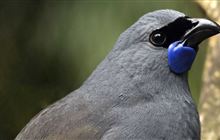First Battle for our Birds pest control complete in South Westland
Archived content: This media release was accurate on the date of publication.
Introduction
DOC has completed the Abbey Rocks and Haast Arawhata pest control operations - two of the five South Westland sites.Date: 31 August 2016
The Department of Conservation has completed the Abbey Rocks and Haast Arawhata pest control operations in South Westland.
The sites are two of five South Westland sites that will receive 1080 treatment in the Battle for our Birds pest control programme that is taking place to protect native wildlife from rats and stoats. Other operations to take place in South Westland are the Landsborough, South Ōkārito and the recently confirmed Haast True Left.
The pest control at the Abbey Rocks 15,312 ha site is aimed at protecting populations of kākā, kea, morepork and other small forest birds.
Kākā in the Abbey Rocks area have been monitored after pest control operations since 2010. About 75% of nests have successfully produced chicks. In other areas where there has been no pest control their nesting success has been between 10 and 38%. The ratio of female to male kākā is also better balanced in areas that receive regular pest control. This is because stoats and possums both prey on nesting female kākā.
As well as knocking down populations of rats and stoats, the pest control will also reduce numbers of possums in the forest, which will benefit vulnerable native plants such as mistletoe, fushcia and southern rata. These plants are important food sources for native birds.
Monitoring has shown rising rat numbers in South Westland forests due to beech mast seedfall providing more food. At the Abbey Rocks site, rodents increased between February and May from 6% to 75% of monitoring tunnels showing rat prints. With more rodents to feed on, stoat numbers then surge.
The Haast Arawhata 31,516 ha site is also home to vulnerable populations, including the Haast tokoeka kiwi. The survival of kiwi chicks will be studied after the operation to determine if management in the wild using 1080 in combination with trapping is an effective tool to promote Haast tokoeka kiwi chick survival.
DOC South Westland Operations Manager Jo Macpherson said the pest control was being timed to prevent increased predator attacks on nesting native birds so more chicks could survive to increase their populations.
"We know that 1080 benefits a range of forest birds, and the picture is becoming clearer for kiwi. Recent research conducted in the Tongariro Forest suggests that survival of North Island brown kiwi chicks reared in the wild was substantially improved when aerial 1080 was used to control pests in their habitat. Monitoring of nesting success after the Haast Arawhata operation will help us understand if this finding transfers to the Haast tokoeka kiwi."
Kiwi eggs and chicks are vulnerable to predation until they reach a weight of 1 kg. Current techniques to maintain and grow kiwi populations are intensive and rely on removing eggs for safe hatching and rearing at crèche facilities or breeding on offshore islands.
The Haast tokoeka kiwi sanctuary within the operational area will receive follow up control with an upgrade of the existing trapping network. The upgrade will cover approximately 8000 ha and will incorporate Goodnature self-resetting traps into the existing network of DOC200 traps. This will provide further protection to vulnerable kiwi from the reinvasion of rats and stoats allowing these slow growing and vulnerable birds to reach adulthood.
The pest control begins with aerial application of non-toxic baits to encourage rats and possums to eat cereal baits, with toxic baits containing biodegradable 1080 aerially-applied some days later or during the next fine weather window.
Aerial 1080 predator control will target rats to knock down their numbers. Stoat numbers are reduced through their eating poisoned rodent carcasses.
Contact
For media enquiries contact:
Email: media@doc.govt.nz

